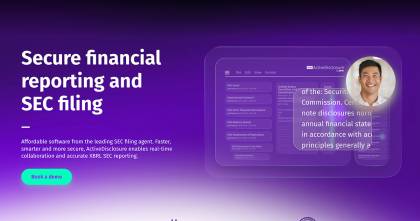All publicly traded companies need to file certain documents with the SEC, or Securities and Exchange Commission. One of these required forms for domestic issuers is the 8-K. Discover the 8-K filing requirements here, including who needs to file, when to file, what filing with the SEC actually means and how to get help.
What is an 8-K Filing With the SEC?
The 8-K form needs to be filed whenever a business has a major event to report to shareholders — but what does a major event actually mean? Whereas some of the SEC forms are cut and dry, the 8-K form is decidedly less so. By understanding when companies typically put out a form 8-K, you can determine whether there has been a qualifying event in your company and take action to file, if necessary.
Companies will put out an 8-K whenever there is something "unscheduled" that should be reported. Common unscheduled events that require reporting on an 8-K include:
- Bankruptcy filing
- Receivership
- Personnel change or ouster of a major executive (such as a CEO)
- Acquisition or deacquisition of critical business assets
- Delisting, or removing shares from the stock exchange
- Adoption of an agreement that requires shareholder approval
- Entry into a loan or lease agreement, or default on a loan
- Outcome of a shareholder vote
- Mandatory regulation and compliance disclosures
- Adjustment of shareholder rights
The 8-K must be filed within four days of the qualifying event; thus, time is of the essence. Since there are many possible events that could trigger the need for an 8-K, companies may need to file this form more than once a year.
One exception to the timeline is when there happens to be a qualifying event in the days immediately preceding another SEC filing, such as the 10-K. In the rare scenario there is a qualifying event within the four-day window of another planned SEC filing, the company can report the news in the longer filing and bypass the 8-K filing. This exception occurs because the 8-K essentially acts as an update to the most recent quarterly report — Form 10-Q — or annual report — Form 10-K. If information can be reported directly on these time-bound reports, there is no need to make a separate filing to disclose news.
Who Files an 8-K Form and Why?
Any publicly traded U.S. company must file the 8-K form. Foreign-owned entities still need to report these kinds of scenarios, but they use a different form.
The purpose of the 8-K form is to communicate with investors any information that affects their handling of shares. Obviously, if the company has positive news to announce, shareholders might want to purchase more stock or sell a long asset to cover a loss elsewhere. Conversely, if the news is bad, shareholders might want to learn more about the negative impact of any actions to determine whether to sell, hold or buy the dip in share price if the futures are bright.
Some of the events reported on an 8-K are relatively minor, such as the change of fiscal year calendar dates or the appointment of a new accountant. The company still needs to report these, even if shareholder impact is minor. While the savviest shareholders will want to read every SEC filing that a company produces, there are also compliance reasons for reporting this information. The SEC mandates the reporting of these types of incidents; and the 8-K must be completed.
Understanding the requirements and time frame for 8-K filing can help you assess when the form must be filed, so it can be generated and delivered within the admittedly tight window. Given the quick turnaround, you may wonder what happens if you miss the filing deadline or forget to file an 8-K form. The SEC may levy fees and penalties if they discover a lapse.
The 8-K form is very succinct, so there is really no excuse to turn it in late. The form requires the name of the company, a description of the event and the attachment of any relevant information in the form of exhibits.
How to File the Form 8-K
What is an 8-K SEC filing form, and when and how must it be filed?
The SEC accepts submissions through EDGAR, which is its data retrieval and storage system. To prepare documents such as the 8-K form for the SEC, many companies utilize secure, cloud-based software. Built-in security features — including encryption, world-class security architecture, strict permissions control and built-in privacy features — allow you to send the necessary documents to EDGAR with no worries of data loss or compromise.
DFIN offers this world-class software designed to help companies prepare and file forms with the SEC, including the 8-K form. ActiveDisclosure is engineered with companies' real-world needs in mind. There are features for collaboration, team management guided workflows and built-in templates for SEC filing forms, all of which help make the process of filing as straightforward and stress-free as possible.
Get the software that companies rely on to quickly prepare and file the 8-K form. Plus, you can receive 24/7/365 support with anything related to SEC filing requirements. Try ActiveDisclosure now from DFIN.




